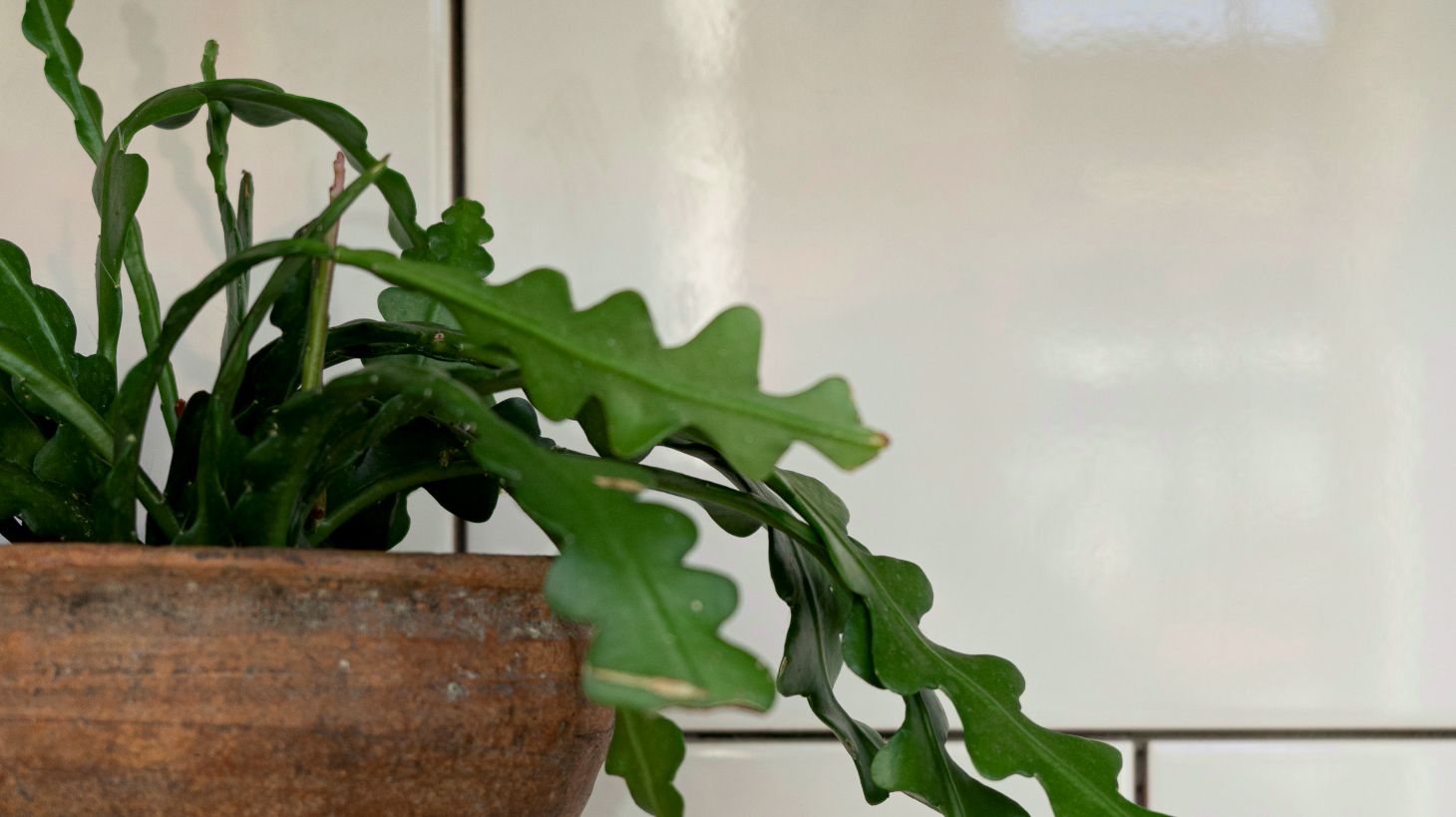Fishbone Cactus Care
The Epiphyllum Anguliger, or commonly known as the Fishbone Cactus has elongated, curving leaves attached to prickly stems. The shape of the cactus makes it a great centerpiece for any garden or plant collection. A total eye-catcher, the fishbone cactus can survive even in the harshest conditions when well taken care of.

The fishbone cactus was one of the most sought-after plants of 2021! This plant looks more like an orchid than a typical spiky, desert cactus. It natively grows from the trees of tropical rainforests. Grown for their angled and toothed stems, this cactus is also referred to as the Zigzag or Ric Rac cactus.
Like succulents and other species of cacti, the fishbone cactus has very similar care needs. They do have their differences when it comes to proper lighting and temperature. Typical cacti flourish under direct sunlight and can survive hotter and drier conditions. However, the fishbone cactus grows in forested areas.
Caring for your Fishbone Cactus

Sunlight and Temperature
This cactus flourishes in areas with indirect sunlight. Excessive direct sunlight could damage this cactus, as it is accustomed to growing in forested areas. Additionally, this species prefers humid temperatures, preferably around seventy to eighty degrees Fahrenheit.
Hydration
When watering your fishbone cactus, make sure that the soil has completely dried up before watering it again. Unlike most cacti, this species requires slightly more frequent watering.
Soil
Cacti are fairly susceptible to root rotting. It is best to provide a soil mix that contains a good amount of organic matter. You can mix traditional cactus soil mix with peat moss, fine tree bark or other organic materials.
Fertilizer
Fertilizing is an important task to do when caring for your plants. The best time to fertilize your fishbone cactus is during the spring and summer. Remember, using a water-soluble cactus or orchid fertilizer is best for these types of plants.
Repotting
All species of cacti require well-draining soil. When potting your cactus, it is helpful to get a container made of porous material like concrete or terracotta. When repotting the fishbone cactus, be very mindful of its ribbed fronds. Avoid damaging the fronds by gently tying them together with gardening wire or wrapping them in newspaper to keep them safe. And generally, like all cacti, remember to wear gloves to avoid being pricked by the cactus spines.

Pruning and Propagating
The fishbone has long stems, making it easy for you to cut them off from the base of the plant. When trimming, make sure to cut the stems and not the ribbed fronds. To identify the stems, remember that they are smaller than the fronds and have spikes on them. Pruning can be done during the growing season when propagating your fishbone cactus is most ideal. You may also trim the fronds shorter to keep them from trailing.
Fishbone Cactus Blooms
This species of cactus is quite unique from others as it blooms flowers only during the night. These beautiful, white flowers only last about a week before completely wilting. The fishbone cacti blooms usually appear once the cactus reaches maturity at around three years of age, during the spring.

Common Issues on Fishbone Cacti
The most common issue that affects most cacti is root rot. This is primarily caused by placing the cactus in a pot with poor drainage or overwatering it. If the plant is experiencing early stages of root rot, a quick fix to this would be repotting your cactus in well-draining soil.
Does your cactus pot have a drainage hole? It better have!
The fishbone cactus can also be susceptible to fungal gnats, which are pests that show up when a cactus is overwatered or experiencing root rot. Fungal gnats are typically attracted to plants with moist soil. To address this issue, you may mix a solution of hydrogen peroxide and water, then apply it directly to the soil. This procedure helps kill the eggs and larvae, preventing their spread.
Owning a Fishbone Cactus
When you own a fishbone cactus, it automatically becomes the focal point of your garden. Its unique look and distinctive growing habit will surely catch the eyes of guests and plant lovers. Unlike the cacti that thrive in desert environments, this cactus is typically found in the humid tropical rainforests of Mexico.
The fishbone cactus blooms a beautiful flower only once during the evening. Due to this, owning a fishbone cactus means you grow it for its foliage more than its bloom. The foliage of the fishbone cactus looks most attractive when placed in hanging pots, allowing the plant to freely grow its leaves downward and creating a beautiful ornament.

This cactus, like all plants, gives life and personality to your home. The fishbone cactus looks its best when placed on top of shelves where their leaves are allowed to grow down like orchids, or placed in hanging pots to give the corners of your home a touch of nature. Its green, angled leaves, combined with the fact that it is one of the easier plants to grow, makes the fishbone cactus a staple for homeowners seeking something a little different from the common succulent or flowering plant.

